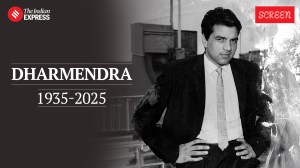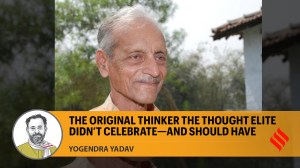Change is a Two-Way Street
Was there a specific moment in time when Bangalore changed, when it transformed from a mild-weathered haven for pensioners to India’s I...

Was there a specific moment in time when Bangalore changed, when it transformed from a mild-weathered haven for pensioners to India’s IT city? When it reached beyond the potential of its limited infrastructure and gathered in its bylanes and suburbs promises of the services revolution? Lavanya Sankaran, wondergirl of the moment with a magnificent advance for this short story collection, does not say. Instead, she apprehends the cusp of change in eight encounters between the old and the new. In her skilled telling, the past and the present don’t collide as much as they glide towards an intersection. They don’t transform the other as much as they affirm the bigheartedness of the city to embrace diversity.
In Sankaran’s Bangalore, Ramu, an upwardly mobile nerd, meets Ashwini, a hip migrant from Bombay. In a cul-de-sac off Ulsoor Road, the retired D’Costas and Gnanakans look beyond the Bajaj scooters and Fiat cars in their driveways and take in the shorts-and-T-shirts-clad investment bankers moving into gleaming highrises. A driver called Ramu, aka Ranga-ppa, shrinks in befuddlement at the moviestar lifestyle of “May-dum”, but finds she mingles effortlessly with his wife and parents in his little two-roomer.
Priyamvada, desperate for authenticity in Chicago, takes off for her parents’ hometown and finds belonging as much in traditional festivities as at Starbucks clones. Sita obsesses about a Delhi socialite’s suicide and nerdy Ramu’s duplicity over a cup of Mysore coffee.
Sankaran’s appreciation of brevity is most evident in her endings. She patiently explores the textures of difference in each encounter and then suddenly ties up — or on occasion disentangles — the encounter. Each time, the city proves itself to be capacious enough to embrace the new while comforting the old. Ramu, for instance, is outraged by Ashwini, she with her superior prattle about “Bombay this and Bombay that”. Didn’t she know, he silently thunders, that “Bangalore was a strange city, a potpourri of beggars and billionaires and determinedly laidback ways.
People dressed down here, not just on Fridays, but every day — and gently derided those who didn’t… self-deprecation appeared modern, with its blue jeans and infotech ways, but was actually a very old courtesy. Deride yourself so others may praise you.” But many stories later he too will acquire the duly earned account of a diffident colleague with the proprietary air of the well-spoken.
These are often sad stories. Their slick structure is repeatedly unsettled by yearning and nostalgia. But each time Sankaran finds a way of enlarging the idea of the city, of celebrating Bangalore.




- 01
- 02
- 03
- 04
- 05



























